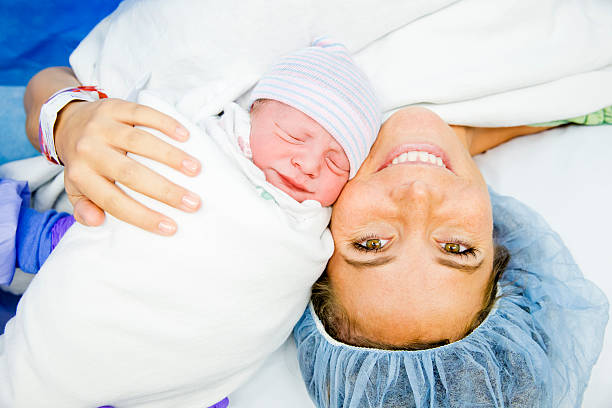The #1 Rated Blood Sugar Formula
Women Need to Be Monitored for High Blood Pressure After Giving Birth

Postpartum preeclampsia is a rare condition that occurs when you have high blood pressure and excess protein in your urine soon after childbirth. Preeclampsia is a similar condition that develops during pregnancy and typically resolves with the birth of the baby.
What if the readings show all is well in a clinical setting, but her blood pressure is actually still high?
It turns out that’s what’s going on, according to Dr. Laura Benschop, lead author of the study and researcher in obstetrics and gynecology at the Erasmus Medical Center in the Netherlands. “We knew already that middle-aged women with previous severe preeclampsia have a three-fold increased risk of hypertension and up to seven-fold increased risk of cardiovascular disease,” Benschop told Healthline. “What we didn’t know is that the percentage of women with hypertension is already this high one year after their pregnancies and that a large percentage of women have an insufficient fall in systolic blood pressure during nighttime. [That’s] a condition which increases your risk of developing [cardiovascular disease],” she said.Preeclampsia risks after birth
Preeclampsia is defined has having hypertension and elevated protein in one’s urine while pregnant. It occurs in as much as 5 percent of pregnant women in developed countries. Scientists already knew that women with the condition were more likely to have high blood pressure after delivery compared to women who maintained normal blood pressure during their pregnancies. Benschop said many women have normal blood pressure readings when in their doctor’s office, but that doesn’t mean their levels don’t spike elsewhere. Her team looked at the blood pressure readings of women with preeclampsia beyond the doctors’ offices to see if the condition is being overlooked. Her team studied 200 women for one year after their pregnancies, monitoring their blood pressure during the day and night as well as taking readings at doctors’ offices.Monitoring and Findings
- 40 percent of the women had high blood pressure during the year after they delivered.
- 17 percent had masked hypertension — normal blood pressure in the doctor’s office and high readings outside of the office.
- 14 percent had sustained hypertension and 9 percent had white coat hypertension (higher readings inside clinical settings).
In general, pregnancy puts stress on a woman’s heart and circulatory system, the Mayo Clinic reports.
Because blood volume goes up 30 to 50 percent to support the baby, a pregnant woman’s heart pumps more blood per minute and her heart rates increase.
Women who develop early-onset preeclampsia(prior to the 34th week of pregnancy) are more likely to have thickening in their heart’s left ventricle one month after delivery and therefore are at the greatest risk for developing heart disease, according to American Heart Association research presented last year.
Research presented the year before found that women who are pregnant at the age of 40 or older are at a greater risk of ischemic stroke, hemorrhagic stroke, heart attack, and death from cardiovascular disease later in life compared to women who are younger when they conceive.
A recent report also found that spontaneous subarachnoid hemorrhage, a rare type of stroke, is rising among pregnant women.
It most commonly occurs in women between the ages of 40 and 65, though African-American women ages 20 to 29 had the highest proportion.
Dr. Kaustubh Limaye, the lead researcher of that study and a clinical assistant professor of neurology at Carver College of Medicine at the University of Iowa, said that one reason for the spike may be due to better imaging technology.
Instead of panicking, women should report any sharp or sudden headache, he said.
“It is important for women who are pregnant to pay special attention to blood pressure because even women who never had high blood pressure may develop it during pregnancy,” added Dr. Randolph S. Marshall, chief of the stroke division at New York-Presbyterian Hospital.





